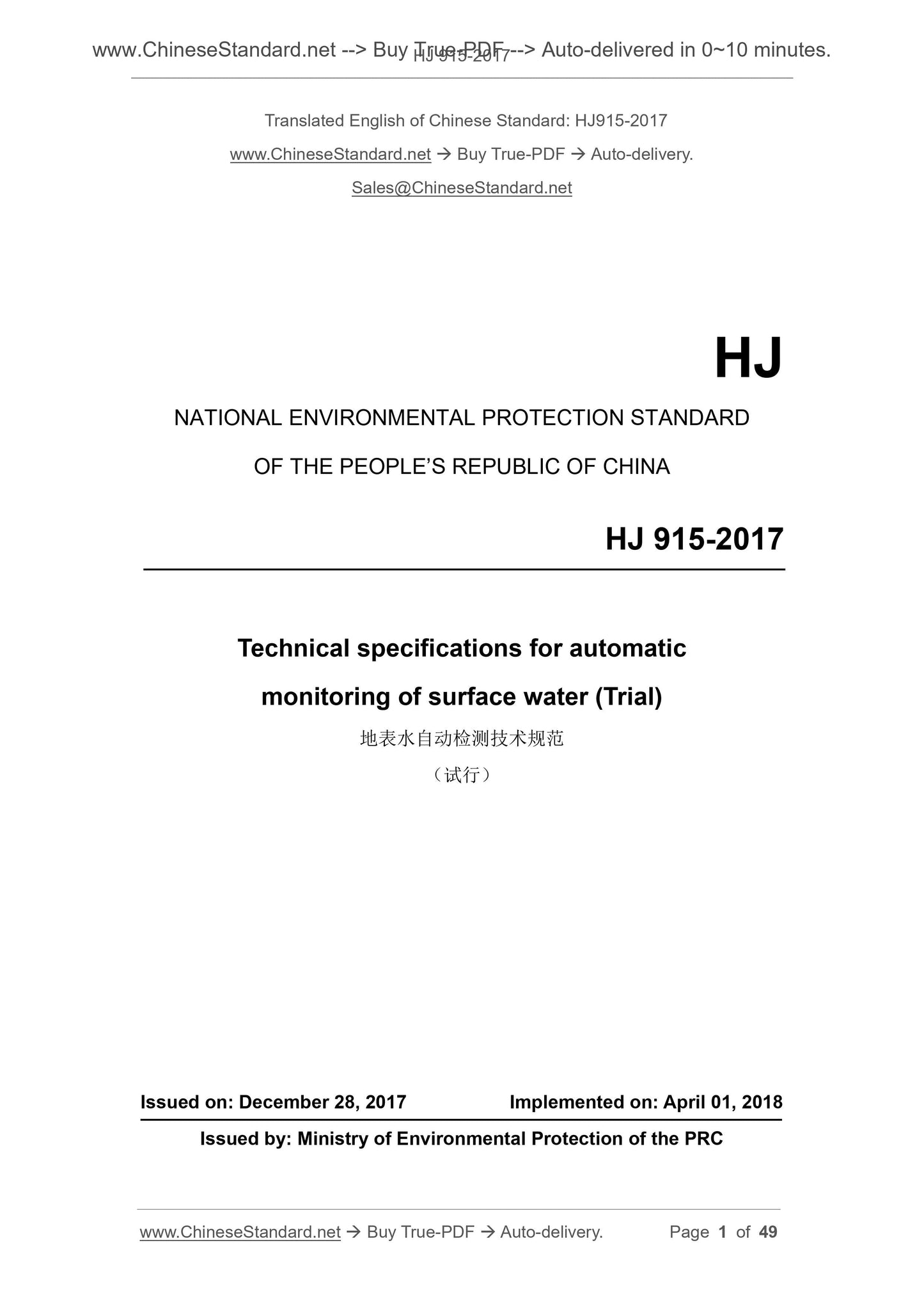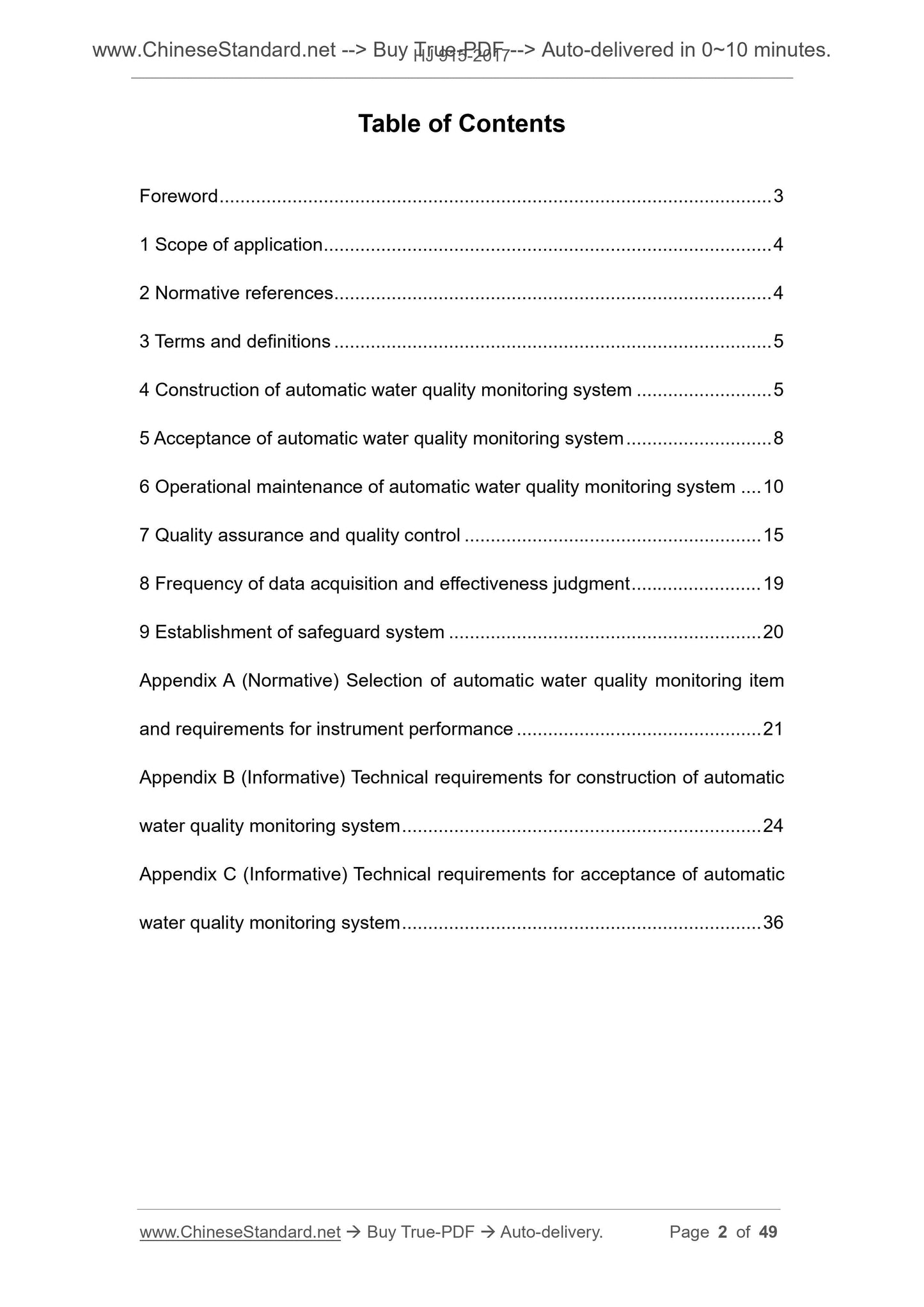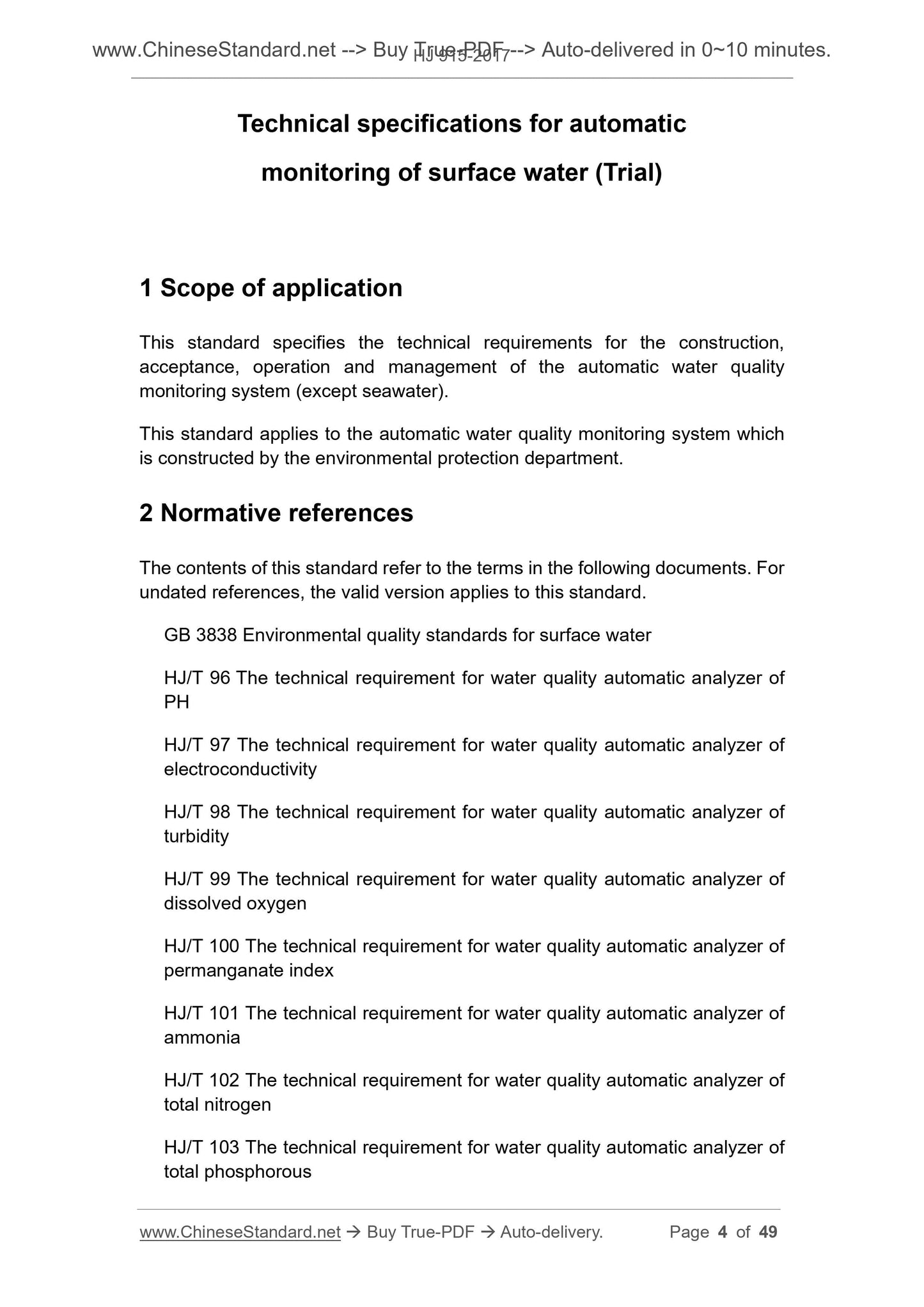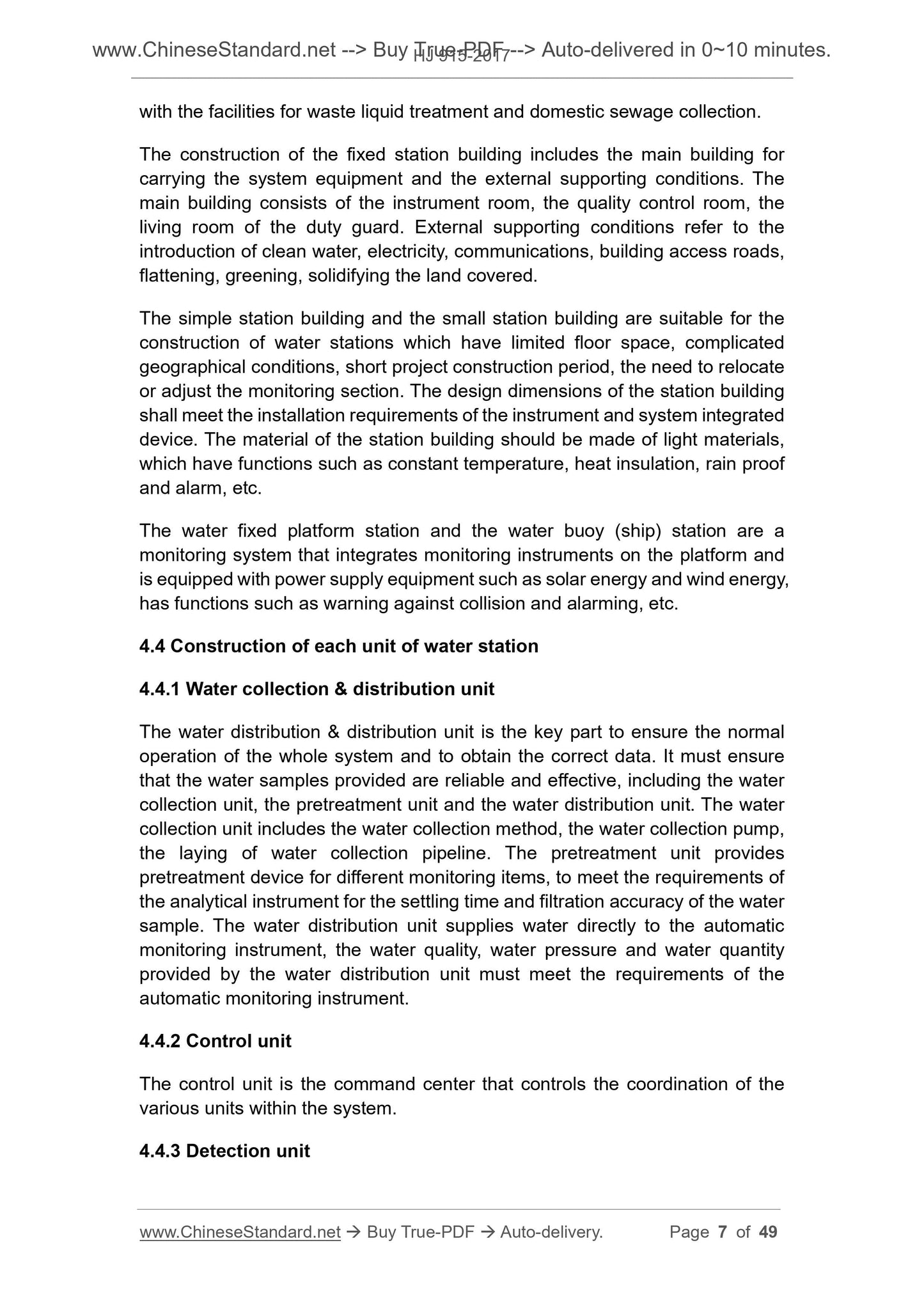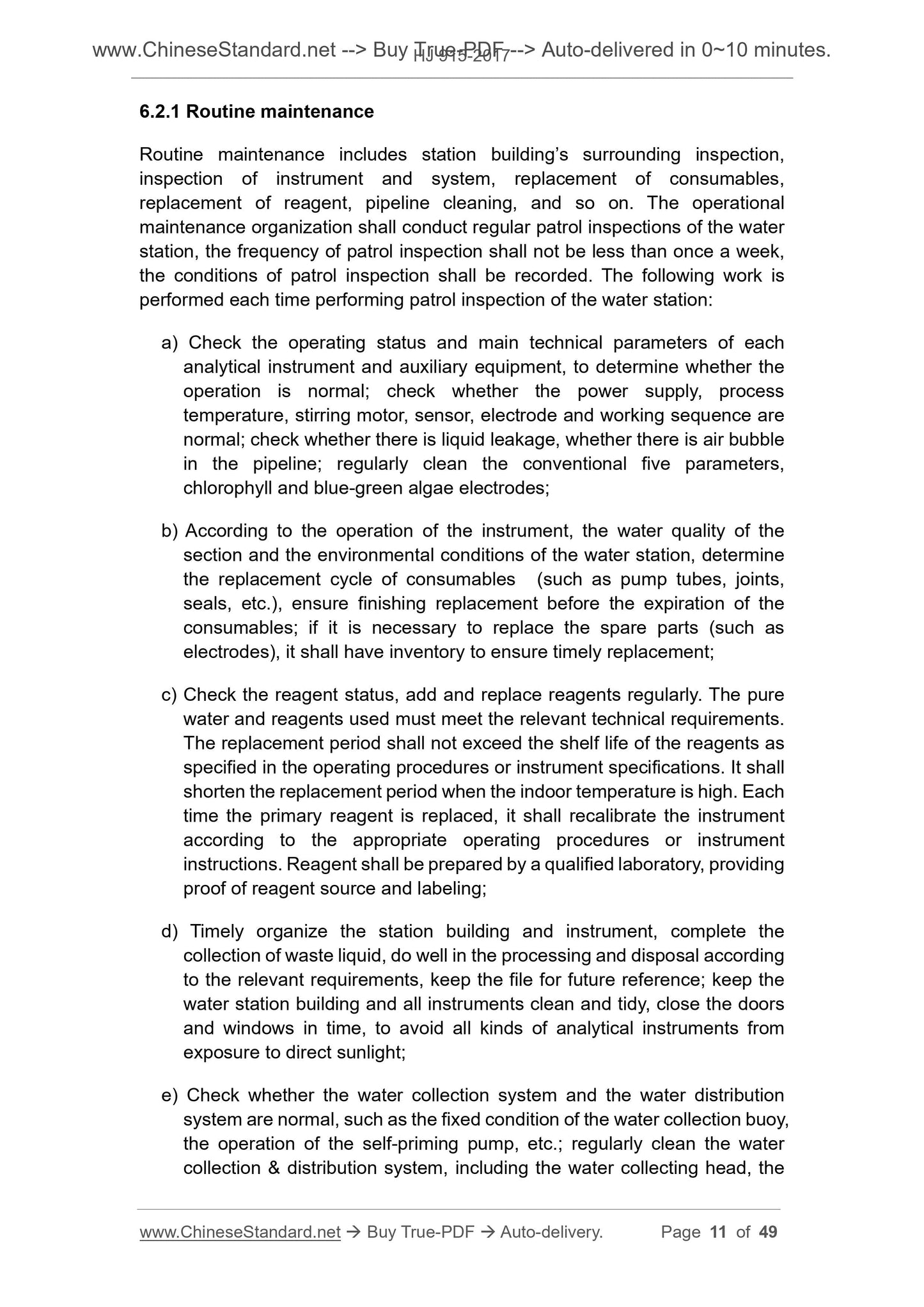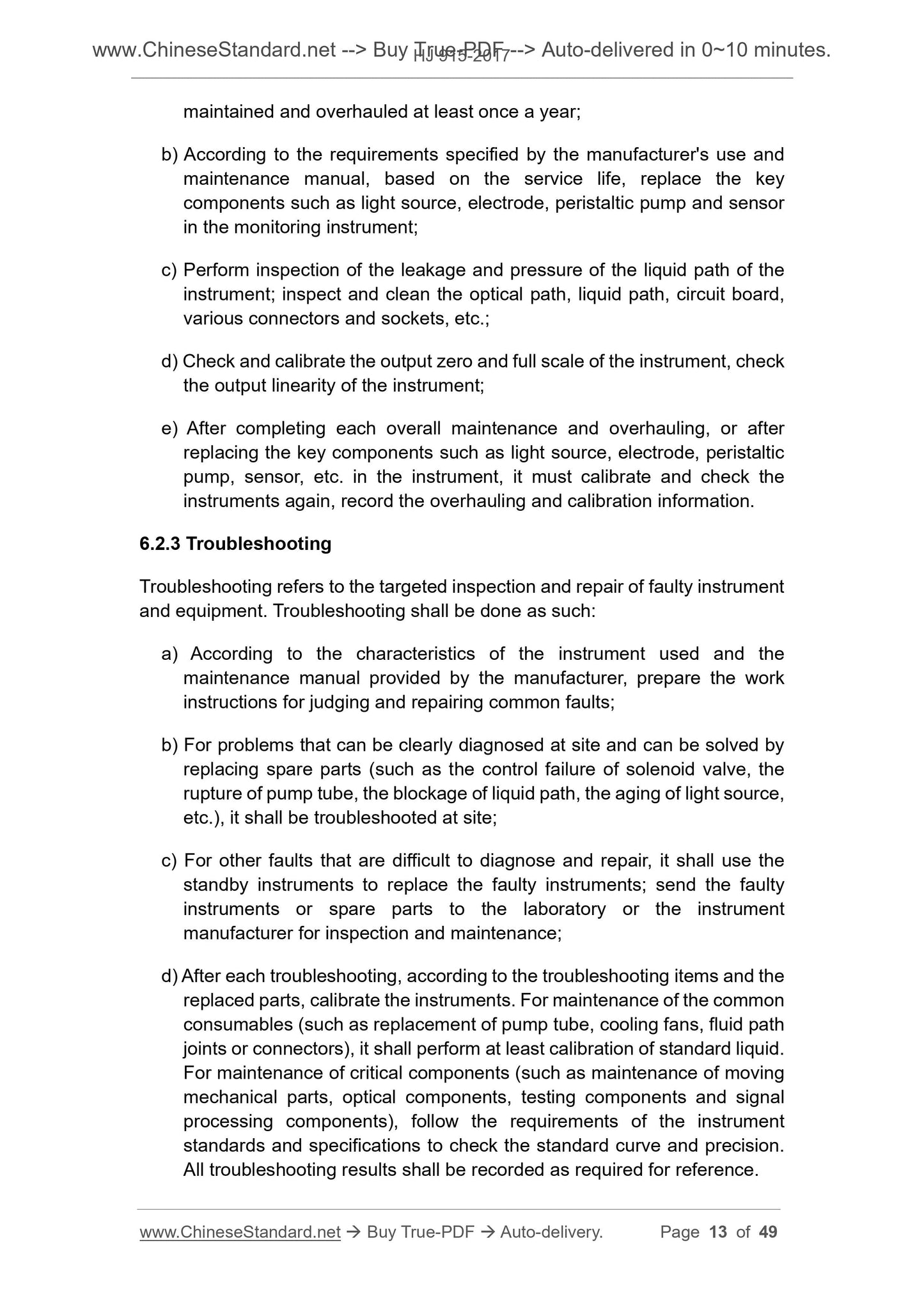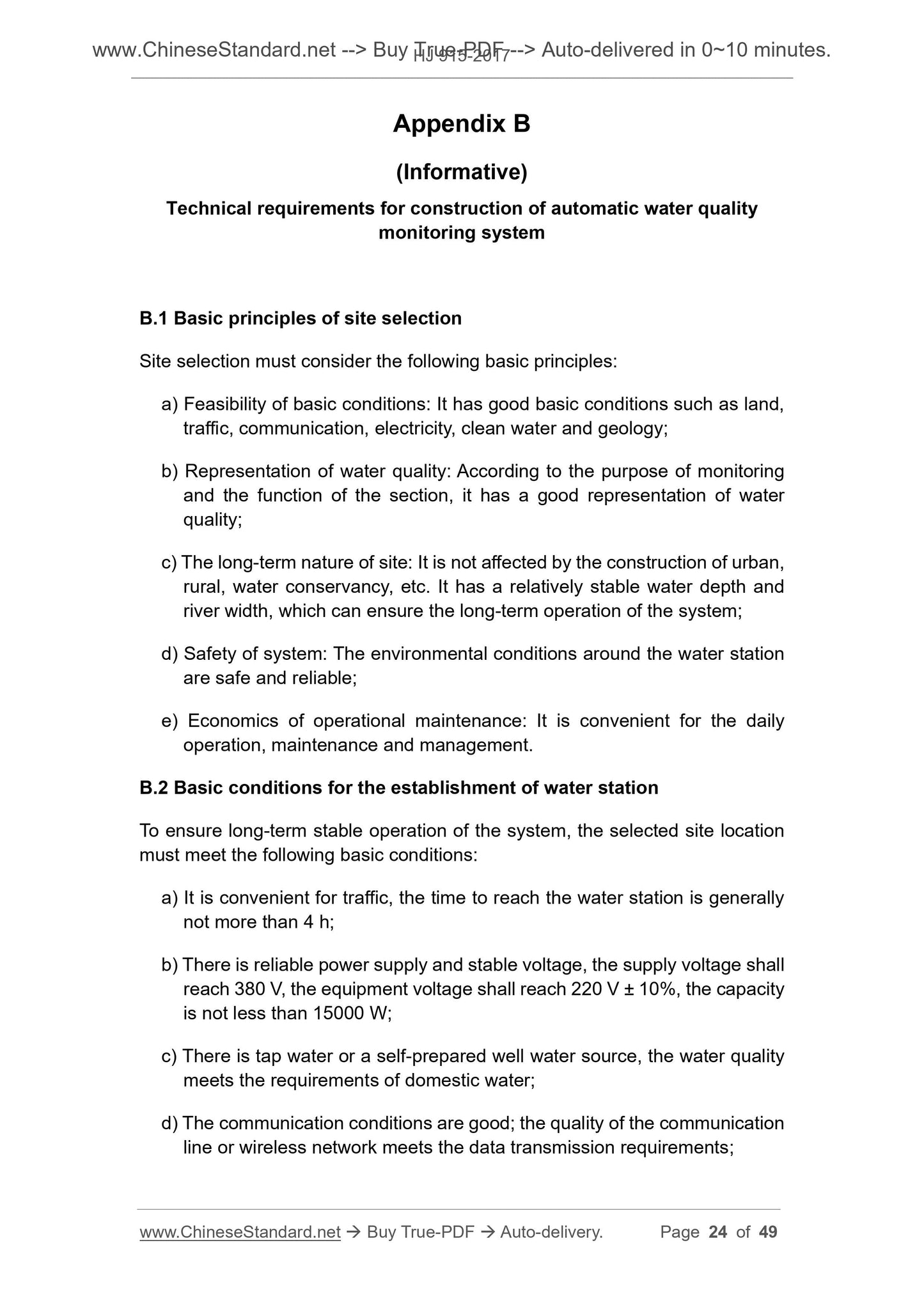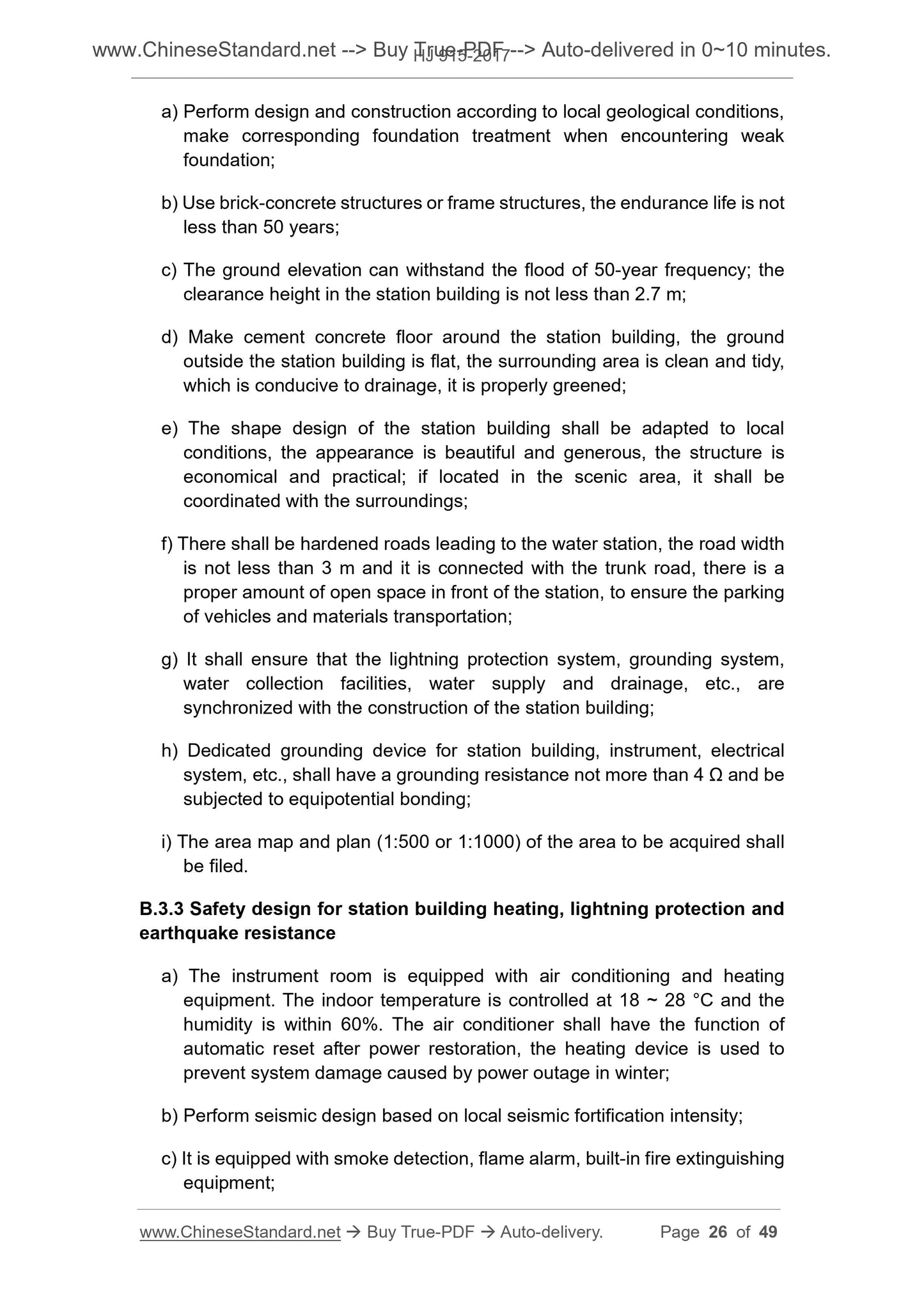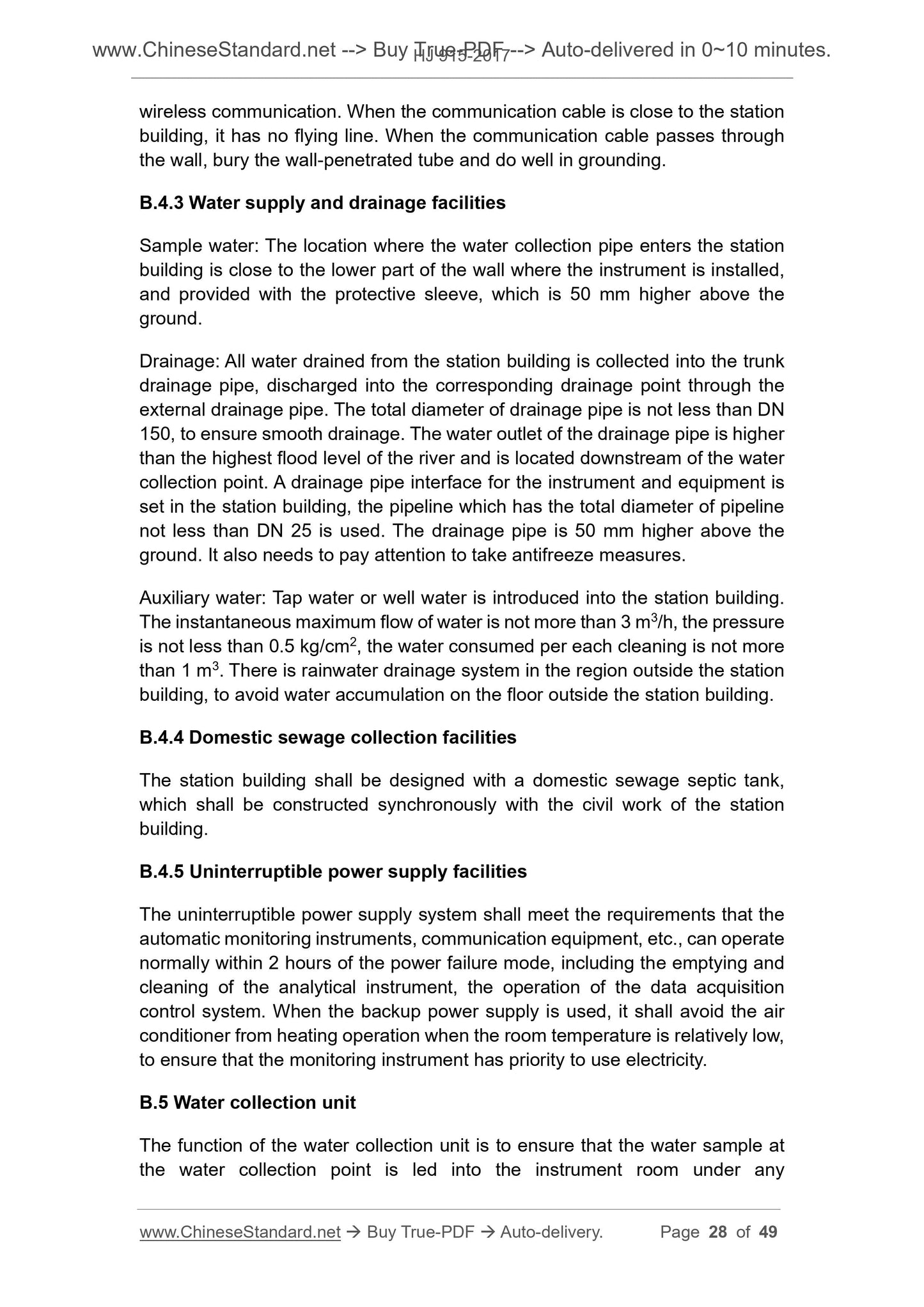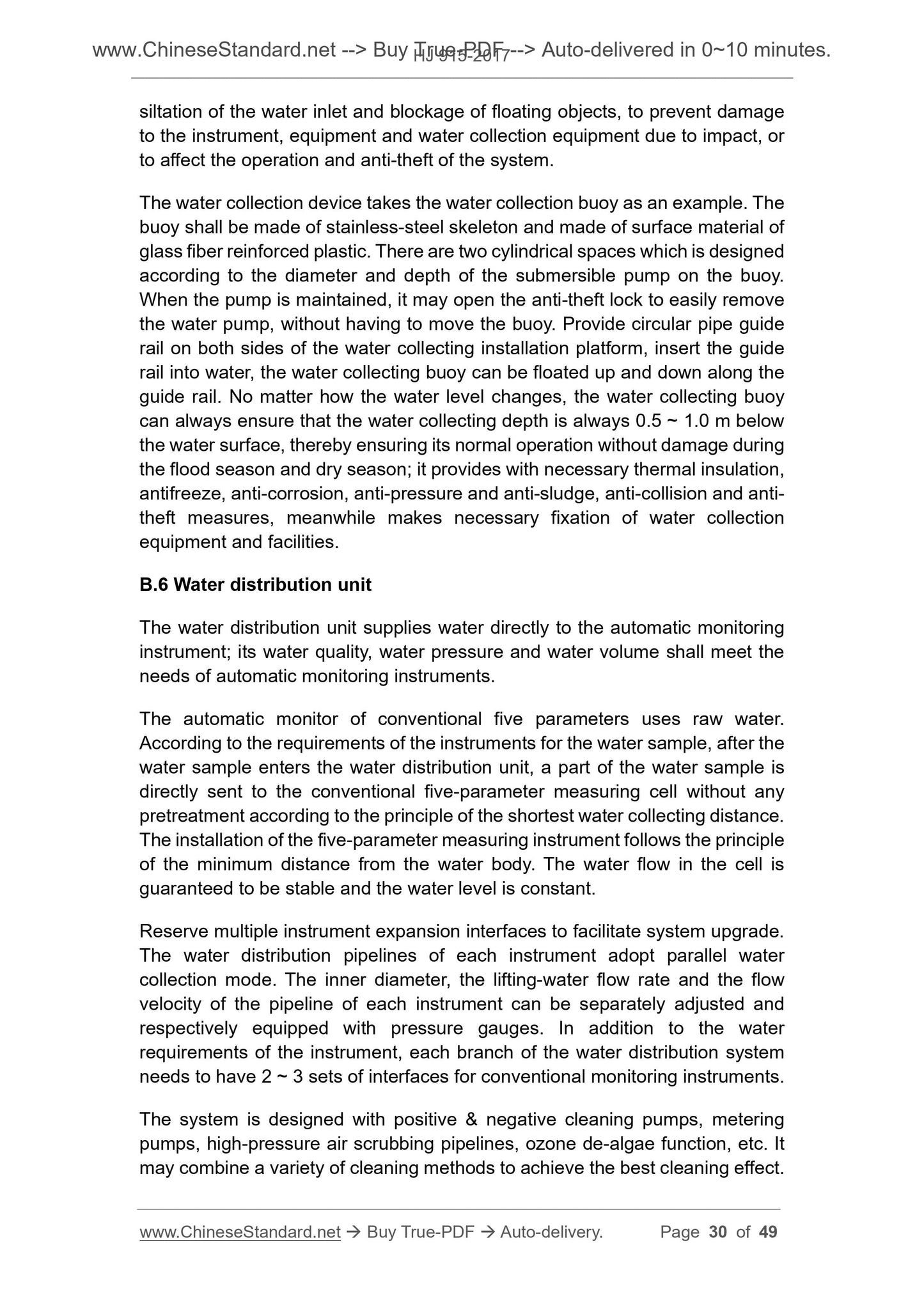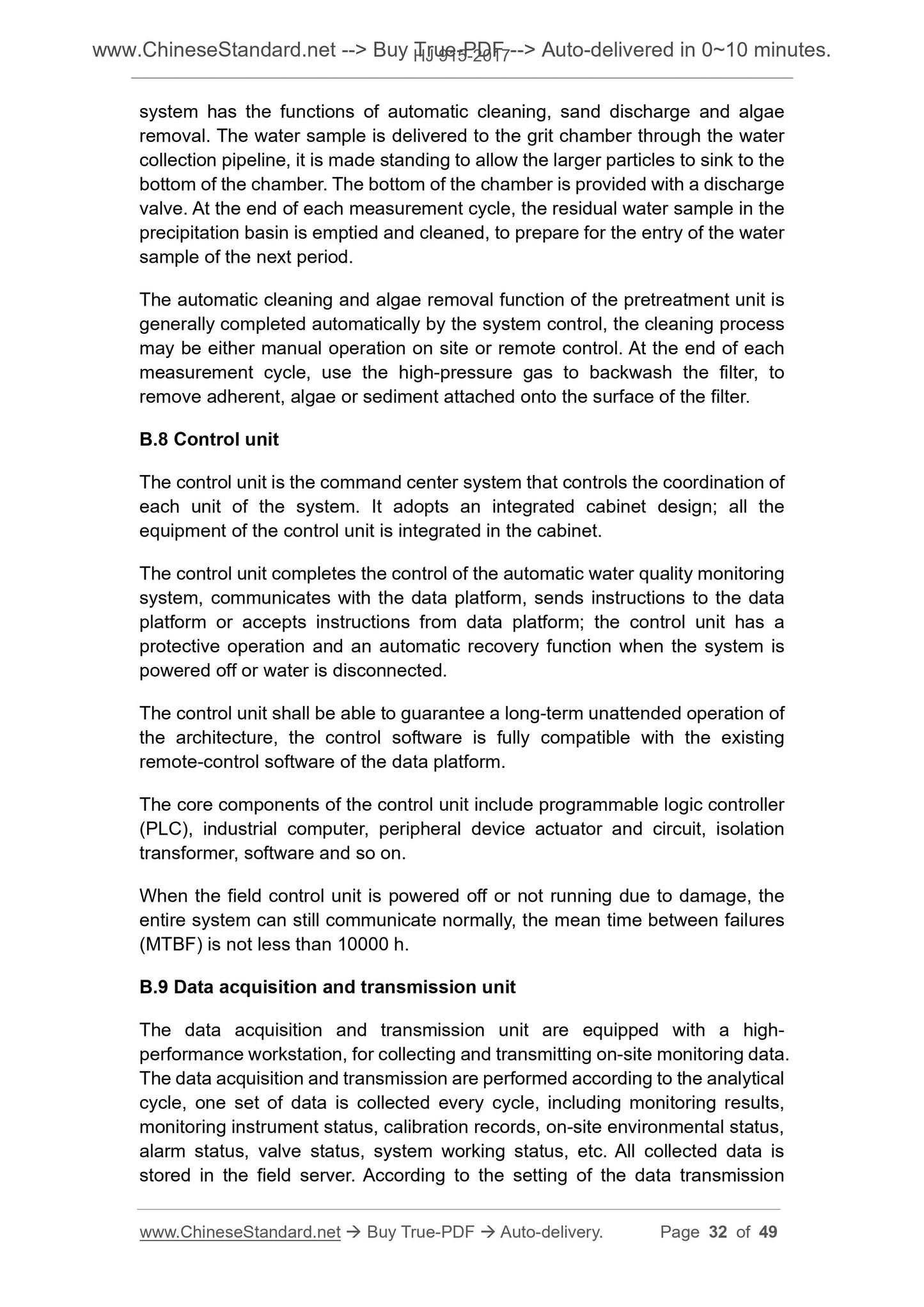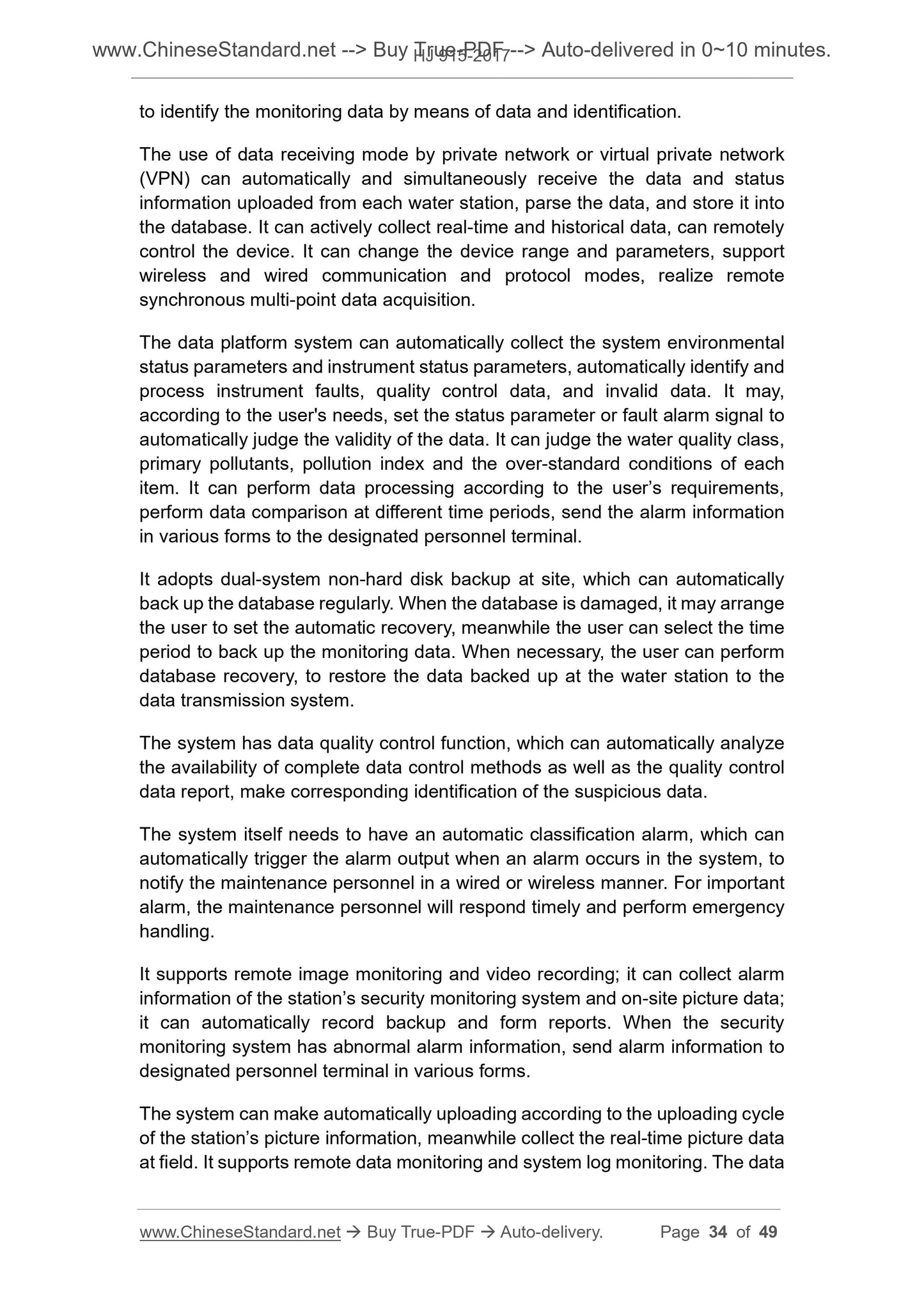1
/
of
12
www.ChineseStandard.us -- Field Test Asia Pte. Ltd.
HJ 915-2017 English PDF
HJ 915-2017 English PDF
Regular price
$365.00
Regular price
Sale price
$365.00
Unit price
/
per
Shipping calculated at checkout.
Couldn't load pickup availability
HJ 915-2017: Technical specifications for automatic monitoring of surface water (Trial)
Delivery: 9 seconds. Download (and Email) true-PDF + Invoice.Get Quotation: Click HJ 915-2017 (Self-service in 1-minute)
Newer / historical versions: HJ 915-2017
Preview True-PDF
Scope
This standard specifies the technical requirements for the construction,acceptance, operation and management of the automatic water quality
monitoring system (except seawater).
This standard applies to the automatic water quality monitoring system which
is constructed by the environmental protection department.
Basic Data
| Standard ID | HJ 915-2017 (HJ915-2017) |
| Description (Translated English) | Technical specifications for automatic monitoring of surface water (Trial) |
| Sector / Industry | Environmental Protection Industry Standard |
| Classification of Chinese Standard | Z16 |
| Word Count Estimation | 39,341 |
| Date of Issue | 2017-12-28 |
| Date of Implementation | 2018-04-01 |
| Regulation (derived from) | Ministry of Environmental Protection Bulletin 2017 No. 85 |
| Issuing agency(ies) | Ministry of Ecology and Environment |
Share
